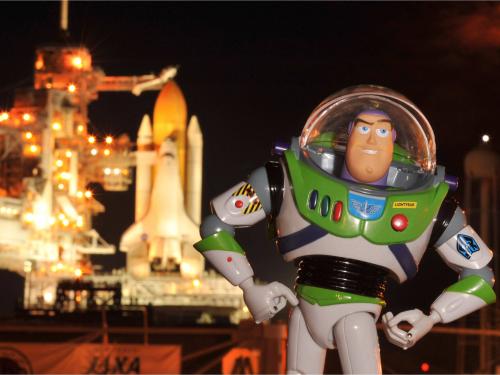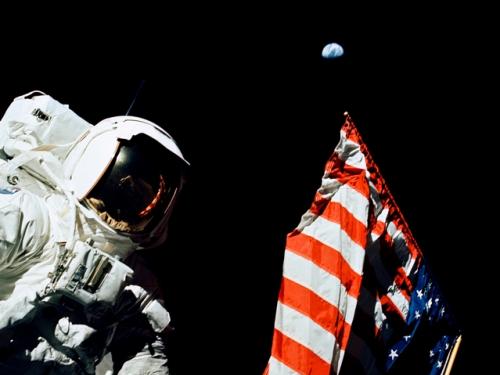
Stories of daring, stories of technological feats, stories of prevailing against the odds ... these are the stories we tell at the National Air and Space Museum. Dive in to the stories below to discover, learn, and be inspired.
Showing 571 - 580 of 634

April 13, 2012
What is the first question most people ask about spaceflight? “How do you go to the bathroom in space?” It’s a puzzlement. The Education staff has decided to seize a teachable moment.

April 04, 2012
Having grown up less than 90 minutes away from the famous Cedar Point amusement park in Sandusky, Ohio, I got the chance at least a few times each summer to see an IMAX movie. I remember the packed seats for the pre-show, everyone clamoring for the best seats right in the middle, but everyone was usually just happy to be escaping the heat for the air conditioned theater. When The Dream Is Alive was released in June 1985, I was just old enough to ride those massive roller coasters, but seeing IMAX films at Cedar Point really left an impression on me: a big impression. Seeing those sweeping views of Earth and space on a gigantic screen made spaceflight seem so real, and utterly amazing.

March 30, 2012
When Disney•Pixar approached the National Air and Space Museum about donating the Buzz Lightyear figure that had flown to the International Space Station for 15 months, I was delighted. As the curator for the Museum’s social and cultural space artifacts, I have the unique job of getting to take toys seriously.

February 16, 2012
The Friendship 7 space capsule was designed to orbit the earth and it did just that on February 20, 1962, with John Glenn, Jr. on board. It circled the globe three times before landing in the Atlantic Ocean. Three months later Friendship 7 began its second mission, or what was popularly referred to as its “fourth orbit:” a worldwide exhibition that was organized to promote and represent the United States and its space program in nearly 30 cities around the world.

January 27, 2012
I received a call from Richard Solash, a reporter with Radio Free Europe about ten days ago to discuss a film being made by Slovene director Ziga Virc and writer Bostjan Virc that alleges that Tito's Yugoslavia had a secret space program and secretly sold space knowledge to NASA, in the process making Tito rich and making if possible for the U.S. to achieve its Apollo program.

January 18, 2012
If you've been to any of the nighttime observing sessions at our Public Observatory, you might have wondered why we mostly view the planets and the Moon. After all, the Observatory houses a professional 16-inch telescope, and several other high-quality portable telescopes; shouldn't they be able to show us great views of galaxies or nebulas? They should, and they could, if they were located at what astronomers call a "dark site" — away from the city lights that often outshine the lovely stars of nighttime.
November 25, 2011
Our lives are enhanced by technologies developed through the research and development supported by the necessities of spaceflight. NASA has documented since 1976 more than 1,300 technologies that have benefited U.S. citizens, improved our quality of life, and helped to advance the nation’s economic welfare. Of course, much has been made over the years of what NASA calls “spin-offs,” commercial products that had at least some of their origins as a result of spaceflight-related research. Most years the agency puts out a book describing some of the most spectacular, and they range from laser angioplasty to body imaging for medical diagnostics to imaging and data analysis technology. Spin-offs were not Tang and Teflon, neither of which was actually developed for the Apollo program.

November 16, 2011
If all goes according to plan, on November 25th the Mars Science Laboratory (MSL) rover Curiosity will leave the Earth and begin its journey to Mars. Any delays due to weather or other factors should be accommodated by a launch window that extends until December 18th. The spacecraft will use a new landing system to arrive at its landing site on Mars in August, 2012, and the rover carries an impressive array of scientific instruments.

October 19, 2011
The National Air and Space Museum was once again honored to host a space shuttle crew this past Friday. This visit was special because it was the STS-135 crew of the shuttle Atlantis, the historic final mission that returned on July 21. The crew was only four astronauts for this last flight, smaller than the normal seven.

October 06, 2011
The remarkable twin Voyager spacecraft continue to explore the outer reaches of the solar system decades after they completed their surveys of the Outer Planets.